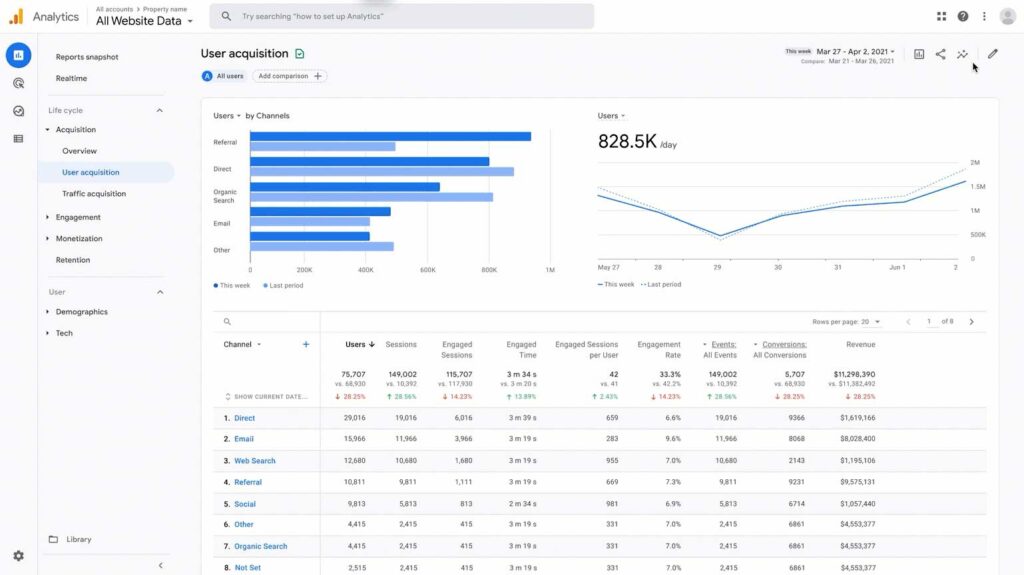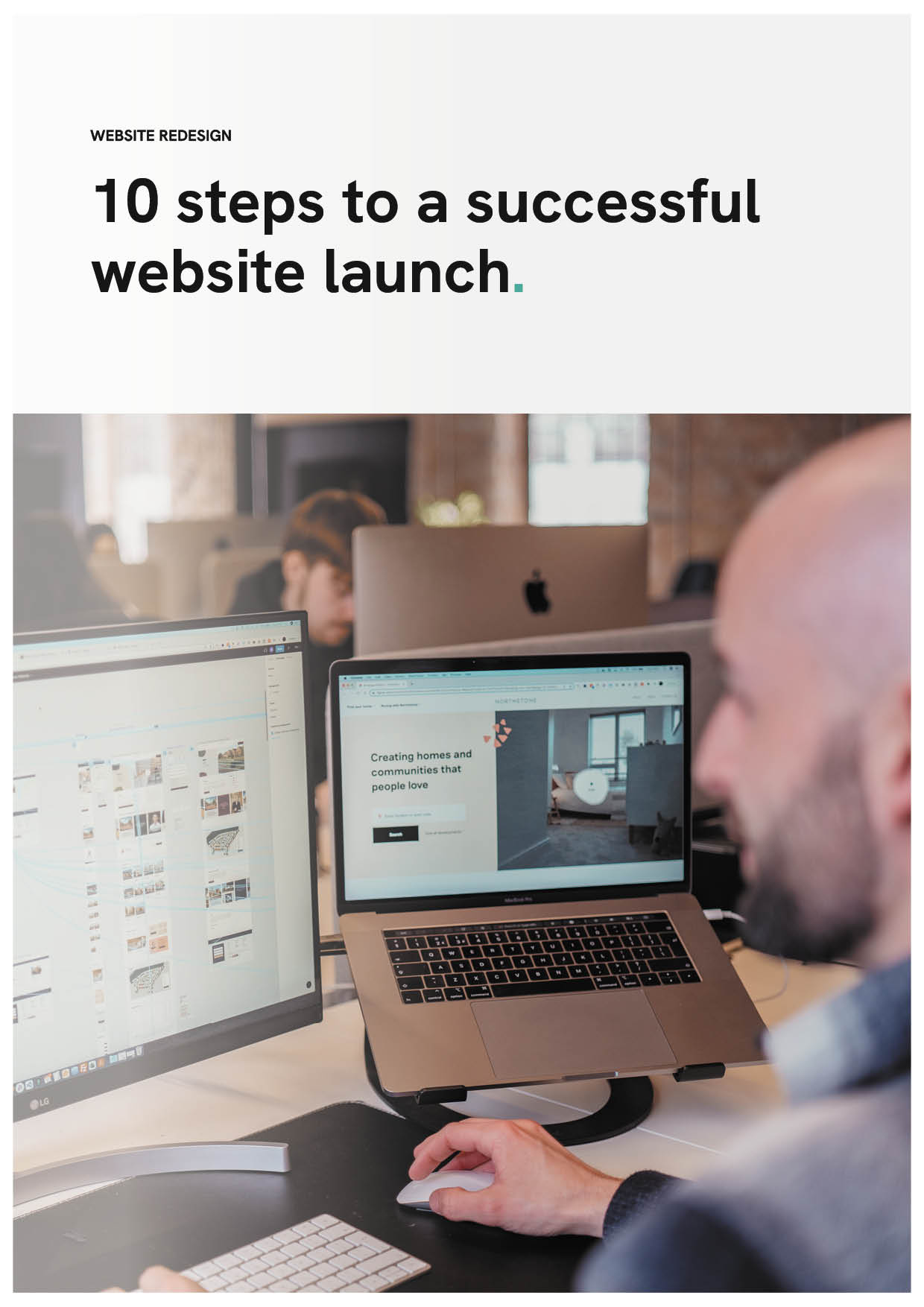Over seventeen years of website redesign experience, tips you have to pay attention to.
Are you happy with your website? Does it make you proud? Does it generate leads, reflect your brand and contain inspirational content? Are you ready for a website redesign?
While you consider your answer, digest these stats:
88% of browsers won’t return to a website following a single poor user experience.
Source: Gomez
75% of people judge a business by its website.
Source: Stanford University
Never underestimate the power of your website. If it’s badly designed, out-dated, difficult to navigate, low in interesting content and not mobile-responsive, it’s time to write a website redesign project plan.
The best websites solidify brand authority whilst creating an engaging and easy to navigate experience for browsers. Your website can be a dynamic and personalised hub of information: the best sales pitch your business will ever have.
But this takes work. To be effective and stay ahead of the competition, you need to be regularly adding to and tweaking your site. This not only means playing by Google’s ever-changing rules but ensuring you’re up-to-date with the latest developments in technology and website design.
If it’s more than two years old, it may need a facelift and if it’s over four years old, you almost certainly need a completely new site.
Follow our ten killer website redesign steps and start the journey of boosting your brand and growing your business.
What are the steps for website redesign planning?
- Performance Metrics, benchmark all your data
- The SMART Strategy for the future, analyse your data for a smart strategy
- Existing Content, audit your existing content
- Your Brand, is your brand giving the correct message?
- Mapping for Optimisation with your website redesign, pages designed for the highest engagement
- Mapping for Visitors, making sure your site excites target customers
- User Experience, develop a strategy for the perfect user journey
- Customised Content, cater your content to be specific to the audience
- Performance Measuring, track your data for clear goal setting and reporting
- What You Can Expect
1. Performance Metrics
Any successful redesign has to start with establishing where you are now.

How is your current website performing? Which areas are the stars of the show? Which need to pull their socks up?
The easiest way to check is via Google Analytics or a similar website performance tracking tool. By analysing all your website traffic, you’ll instantly see how good your site is. These metrics include:
- Average number of website visits
- Average monthly bounce rate
- Average monthly time spent on site
- Your top performing keywords by rank, traffic and lead generation
- Total number of inbound links by domain
- Average amount of leads per month
- Total number of sales per month
- Number of indexed website pages
- Number of pages with traffic
Once you’ve identified what metrics to focus on in your website redesign plan, you can craft a website that’s fit for your purpose. One that is sure to add value to your business.
Two of the most effective tools to help you identify where your site is, how your competitors are performing and what metrics you need to keep an eye on are:
We use these tools to analyse any clients website before we launch the new website redesign. You have to benchmark where your site is otherwise you never understand what you have achieved and if your investment has been well spent.
2. The SMART Strategy for the future
Next, it’s time to think SMART.

Before tackling your redesign, you need a strategy. A SMART strategy for the future. This should be based on what you hope to achieve:
- More sales?
- An engaging, user-friendly experience?
- Increased client retention?
- Re-branding?
- All the above?
You have to imagine what you want your business to look like in 5 years, TODAY.
Any effective website should be more than a resource. It’s an engaging online experience. Your website is the best marketing asset you will have, an opportunity to show the world who you are and what you offer.
Experienced digital professionals know to always keep your strategy in mind but how can you quantify it?
SMART goals are specific, measurable, achievable, realistic and timely. As you plan your website redesign project, set goals that meet those criteria. For example, you might want 10,000 page views, 25 leads and five conversions per month.
Once established, it’s time to get your digital team on board. This way you can plan, communicate and execute the complete redesign with a minimum of fuss – and stress.
Write down your project goals in detail and they will inform your site map, create a roadmap of necessary features and provide tangible results that can be analysed.
3. Existing Content
If you’ve never heard the phrase “content is king”, you have now. Everybody is consuming content.

As the biggest contributor to your search engine ranking, getting it right is imperative. But that doesn’t mean you should trash all the existing content in your website.
Part of your website redesign plan needs to include taking an inventory of the current content. Then ask yourself these questions to help you decide what to save and what to scrap:
- How many pages will your website redesign have?
- Which pages on your current site generate the most traffic?
- How many inbound links does your website have and where have these links come from?
- What are your most searched keywords?
- What is the primary function of your website?
- Will this content add value to your redesigned website?
Look at relevant eBooks, whitepapers, blogs, videos and infographics – when they’re comprehensive or interactive they make a major contribution to lead generation.
This type of premium content is freely accessible and highly desirable. Unless hopelessly outdated or poorly written, it should be transferred.
Content is one of your website’s valuable assets: what it presently offers that appeals most to your customers. These assets also include inbound links, keywords ranking and conversion paths. All are essential to maintaining an effective website.
Nail your content and you’re well on your way to search engine supremacy.
4. Your Brand
Now you have clarity on your content, it’s time to tackle your brand.

You may already have a brilliant brand: perfectly aligned with the ethos, nature and purpose of your business.
But if your brand makes more of a whisper than a bang, a rethink is vital to ensure your website redesign project plan is a success.
The best brands are those that have the strongest identities. This immersive approach is what customers remember: a snappy name, a dynamic slogan, a clear vision, a consistent style.
Your website redesign must be cohesive and is the perfect opportunity to hone your brand. Use it to create a look and feel that is uniquely yours and to persuade your customers they can’t afford not to use you.
The most important question that your brand should answer is: “Why you?”
What sets you apart from your competition? Why should customers choose you over someone else? What gives you authority? What makes you trustworthy?
Answering this question with confidence will give your customers a reason to invest their time online in you and buy from you.
Use your answers to define your brand identity from its USPs, tone of voice and overall vision to the logo design and chosen colour palette. It will give you a solid platform on which to base all activity across your marketing channels.
5. Mapping for Optimisation with your website redesign
You’ve ticked the creative stuff off your list. Are you ready to tackle the technical nitty-gritty?
A website is only as good as the user experience. It could have great visuals to draw the eye and compelling content to explore but without a site map, your visitors won’t know where to turn next.
A site map creates relationships between pages and components of your website. It informs how visitors move through your site and informs Google how each element of your website works. Without it, both will be floundering.
For your visitors, keep in mind that online attention spans are short. In the 5-7 seconds they spend deciding if your website is impressive enough to explore, they want to know that it’s going to be straightforward as well as informative.
Order sub-pages clearly, ideally at the top of the page from left to right, make your call to action and navigation buttons obvious, and aim for clarity everywhere.
For the search engine crawlers, this same clarity influences where your website is indexed. The percentage of browsers searching Google’s indexed pages drops significantly the more pages they flip through.
If you want to see what Google sees when looking at your website, remove all the style elements (images, videos, menus etc). Is the navigation clear to you? If not, get working on your site map.
To plan which components will make up your site map, just ask yourself a few basic questions:
- What pages do I want to include?
- What pages will form part of the main navigation bar? For example, Home, About Us, Products/Services, Contact Us
- What pages will form part of the secondary navigation bar? For example, Blog, Popular Products/Services, FAQs
- In what order will your pages be?
A content map is equally as important. This allows you to organise your website content and optimisation elements including:
- The value you bring
- Header titles
- Featured content (images, videos, infographics etc)
- Secondary content
Creating a site map allows you to visualise how your site will look to browsers and provide you with a solid foundation on which to develop a superior user experience.
Create one within your website redesign project plan and you’re a step closer to achieving a clear, organised and easy-to-navigate website.
6. Mapping for Visitors
Think about your current website again.
- Does it prompt action?
- Are your calls to action irresistible?
- Does it add any value?
- How long are your visitors browsing for?
- Are they actually the kind of visitors you want and your business needs?
Have you answered “no” too many times? You’re due a website redesign.
Maybe you already have a vision of what your shiny new website will look like. You love pink – the main theme colour will be pink. You have a quirky sense of humour – the copy will reflect this.
But this isn’t about you. This is about the visitors who need to become browsers and ultimately buyers.
Put yourself in their shoes. They will be judging your brand, making decisions, influencing your bottom line.
If you don’t even know who your potential customers are, you need to create some specific buyer personas.
The question is not who could you sell to, but who you want to sell to. And this requires some market research:
- What types of people would you like to visit your site? Consider age, occupation, geography etc.
- Why have they come?
- What do they have in common?
- What do they expect?
- What do they like?
Answering these questions will allow you to build a user experience that will bring people back, again and again. You’ll be able to move away from assuming what they want to knowing what they want.
Clearly-defined buyer personas are hugely helpful while revamping your website in terms of both design and navigation. They allow you to create a website that gives them what they want.
But how do you turn these current strangers into buyers and ultimately advocates of your business?
Enter the call to action. These invitations to act form part of your conversion map, a method of measuring how browsers become buyers.
First, you draw your visitors in with engaging content, strong SEO, blog posts and industry insights.
Next, once you’ve attracted them to your brand, it’s time to convert them into customers with the help of enticing CTAs on every page of your website. Position them directly next to the reasons why they should act and keep them moving through the conversion process.
Choose the wording of your CTAs carefully: use dynamic action verbs that clearly convey the benefits of clicking. For example, “Get your free e-book” instead of “Download” or “Get free quote” instead of “submit”.
Enticing your ideal customers to find out more, to access expert information or to save money will generate more leads and more interest as they continue their buying journey.
7. User Experience
Your visitors have arrived at your website but how do you keep them there?

With a great user experience. Engage them so they want to explore. Use smooth navigation, clear direction, inspiring content and persuasive calls to action to see your conversion rates soar.
The longer they stick around, they more likely they are to become a lead.
Remember that first impressions count so make sure your redesign has impact and reflects your brand.
Five Website Redesign Tips to Wow Your Visitors
1. Consistent Appearance
Browsers expect design consistency across all pages: it reassures them that they’re exactly where they want to be.
The navigation bar is often the first place people go so keep its appearance in line with the rest of your site. A cohesive approach to design will allow visitors to easily identify the most important content on your website.
2. Inspiring Imagery
Choosing inspiring, appropriate and powerful images helps to build your brand identity. It’s a great opportunity to showcase the personality of your business and add character to your website.
Plan what images you’d like to use carefully: make them personal and memorable and aim for cohesion between them. Using bespoke photography will further help to make you stand out from your competitors.
Some of the best resources for images that we use are:
3. Think About Your Visitors
Keep your buyer personas forefront of mind throughout your website redesign plan.
Aim to make their user experience exceptional with valuable, easily-accessible, beautifully-designed content. From navigation bars to CTAs, contact pages to products or services, always think about what will create a positive experience.
4. Personalised Content
All your content should be targeted at your key buyer personas – but make sure you do this in a personalised way. People react more positively to something that asks them a question, not everyone a question.
You could acknowledge them with a personal greeting or provide sector-specific thought leadership pieces positioned as must-reads. Aim to provide a personal experience for everyone and see bounce rates drop.
5. On-the-Go Logging On
Worldwide, more people search online with mobile devices than laptops or desktops. For many people, their smartphone is their only computer.
This continual shift towards mobile browsing means that if your website isn’t optimised, potential customers will look elsewhere.
Focus on being mobile-friendly first before turning your attention to a desktop design.
8. Customised Content
It’s time to get personal.
Yes, you want your website to reach lots of people but you also want it to engage with each of them on an individual basis.
Alongside content that sparks interest, adds value and addresses your customers’ needs, you need to grab their attention by reaching out to them personally.
A great way to do this is via a landing page. The name of the game here is to get visitors to go where you want them to go and see what you want them to see.
Landing pages include a short form for visitors to fill in to access an attractive offer. As a lead generation tool, they’re priceless. But they require thoughtful design:
- Make the offer obvious and irresistible with a clear CTA
- Ensure the form is concise with minimal input fields – it should take no more than a few seconds to complete
- Ensure the whole page is also short and sweet with a clean design – remember to highlight key USPs
- Remove all unnecessary page elements including the navigation bar – you’re aiming for few distractions so visitors don’t go anywhere other than where you want them to go
- Don’t go overboard with images – yes, they draw attention but they can also distract
9. Performance Measuring
You’re nearly there!
The start of your website redesign project plan began with performance measuring and now you need to do it again. This time, expect bigger and better results.
Using Google Analytics immediately before and after the redesign will let you see the immediate benefits. Real-time data will show you what’s working: any elements that aren’t performing as well as expected can be quickly tweaked.
The ROI that can be achieved is significant. You’ll enjoy more visits, more page views and lower bounce rates.
Perfecting performance enhances the user experience and gives you more opportunities to grow your business.
10. What You Can Expect from a successful website redesign
Once you’ve carried out our 10 website redesign steps, and hopefully had fun along the way, what can you expect next?
- A revitalised brand
- Increased lead generation
- Increased organic traffic
- Increased customer interaction
- Decreased bounce rates
- Opportunities for growth
- Increased revenue
With the right digital team on board, your website redesign plan doesn’t have to be complicated. Break it down into steps, get guidance from the experts and watch your business fly.

